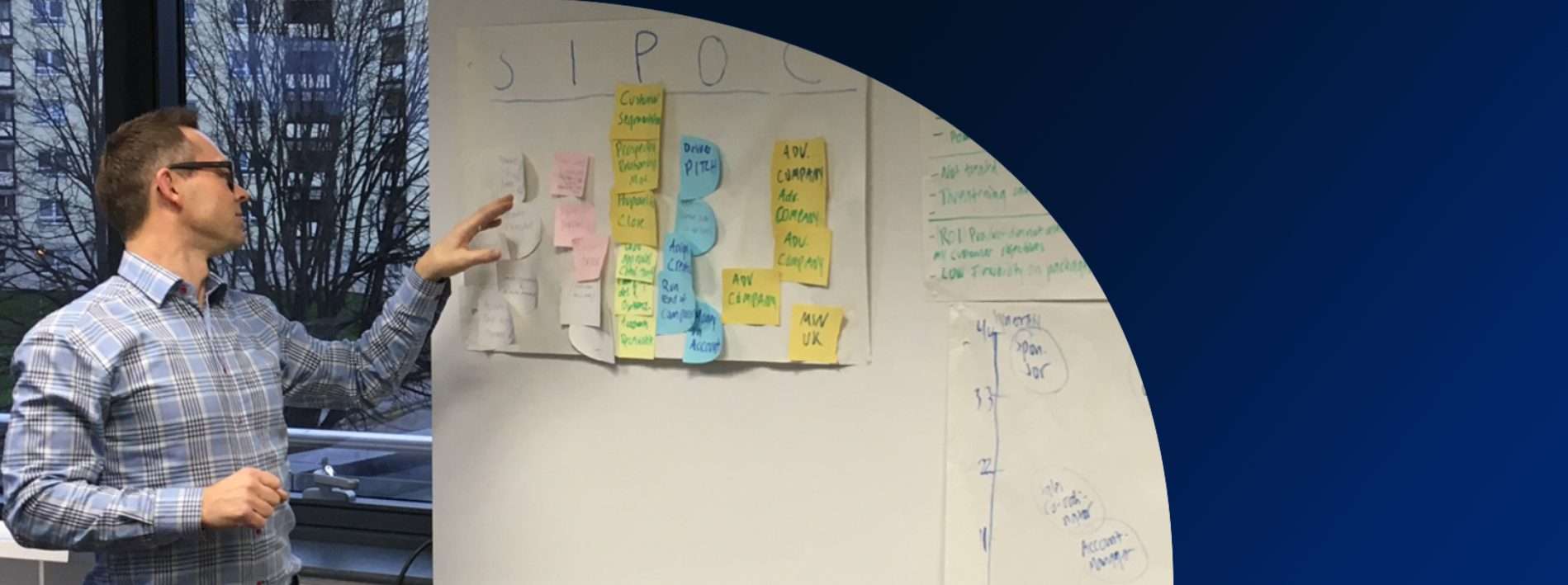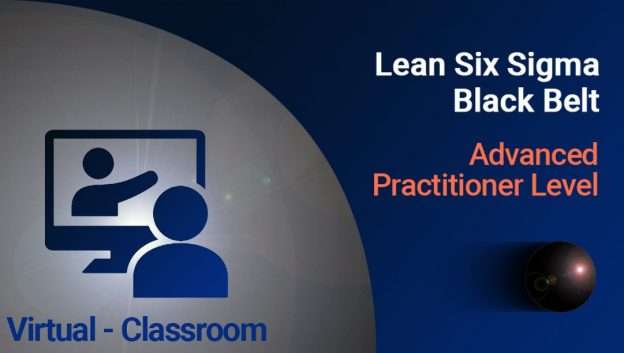
Lean Six Sigma Black Belt Training and Certification equips you with “Advanced Practitioner Level” perspectives and skills in process variability reduction (DMAIC), process waste reduction (LEAN) and a comprehensive toolkit to plan and lead change in your organization.
This course builds upon your Green Belt knowledge to expand your Lean Six Sigma expertise, strengthen your knowledge and skill sets, and gives you the confidence you need to take that next step as a continuous improvement professional and return back to your organization with a greater level of analytical, project implementation and change leadership skills.
You walk away with the learning and the know-how. This means not just focus on the “what” to do but the “how” to do it, with greater emphasis on typical project barriers and “hints” and “tips” on “how” to overcome using case studies and compelling best practices as part of the learning experience.
Come with a change initiative
What are change initiatives?
Change initiatives are usually plans and actions aiming at implementing a process transformation in an organization that could result in a change of the culture, communication, human resource, logistics, and etc. Change initiatives come from all geographies, industries and career levels, so it’s hard to generalise.
Common examples of challenges
- Creating a company-wide culture of customer focus or digitalizing a product or service
- Motivating employees to accept changes in a continuously changing business environment
- Adopting a new organizational solution and making sure it’s fully implemented
- Setting up a new system in an overseas subsidiary – with a lot of push-back from local employees
- Facing the changes in employment/process/system due to taking over new markets or companies or being acquired by others.
Why are they important in this programme?
Having a change initiative(s) allows participants to contribute their unique experiences, personalise the tools to their own situation and make an impact back at the workplace. By the end, they have a clear set of priorities and are ready to create an action plan that can be used immediately upon their return to work.
It is not necessary but recommended that applicants have at least one change initiative, which allows them to adopt a learn by doing approach to apply learning outcomes to a real world scenario(s).
How you benefit:
- Sustain actionable knowledge. Harness information you already have into a solid understanding of how to build sustainable processes and structures to enhance your organization’s capability
- More competent as a manager. Become a more competent and confident manager with new insights, knowledge and skills.
- Elevate key skills in change leadership, analyzing data and decision making to take on greater responsibility to pinpoint and manage performance shortfalls
- Insights on where to focus attention to influence change in your organization and how to identify, scope and charter continuous improvement projects
- Master the skills you need to combine statistical and quantitative methods with the interpersonal skills required to influence, inform and drive change
- Develop coaching skills to guide team members and advise management during Lean Six Sigma implementation
- Come with a change initiative (optional) to apply the learning in your personal or your organization’s context
Participant profile:
Black Belt Training and Certification is designed for Certified Green Belt’s from a wide variety of manufacturing, service and transactional organizations either currently involved with, or who aspire to, or have recently gained continuous improvement responsibilities;
- Seeking to develop in-depth knowledge and analytical skills in process variability reduction (DMAIC) and process waste reduction (Lean)
- Who want to strengthen their ability to lead change and enhance their organization’s continuous improvement capability
- Participants coming in groups/teams to collaborate on an Action Learning project tailored to their organization’s context
Course Pre-requisites
Lean Six Sigma Green Belt Certificate either with Game Change or another bonafide training provider
(evidence required during registration process).
Exam and Certification
Exam: 50 Questions
Duration: 70 min.
Pass Mark: 70%
Achieve 70% pass mark in the Black Belt multiple choice final exam
Our Live Virtual Classroom courses leverage the power of technology to allow you to join from anywhere in the world to connect and engage live with instructor’s and peers just like in a classroom.
Featuring the same course content, world-class engaging, interactive teaching and diverse participants you can expect from face-to-face learning this new blended format includes virtual and online learning to deliver the insights and tools you need to bridge the gap between theory and real-life execution.
Delivered over 15 weeks that combines video lectures, real-life examples, discussions and quizzes to bring the key concepts to life. Each week of content follows a very clear path to facilitate learning for busy professionals. Our learning platform allows participants to learn at their own pace during each week, by viewing the content, completing assignments and engaging in discussions, taking on average 4-6 hours per week to complete.
Last but not least, the course provides a ready-made support network via our online learning platform where you can get in touch with Master Black Belt experts and fellow participants facing similar challenges.
The online material allows you to complete a significant portion of work flexibly – at your own pace, wherever you might be. Preparation completed online is then pulled into Live Virtual sessions, helping you make the most out of your time in class to apply the learning and to ensure you fully understand the topics.
- Purpose built instructional videos recorded in our media studio
- Interactive exercises and quizzes
- Cases, readings and additional resources
- Online discussions, guided by Master Black Belt’s and teaching assistants
As a course participant, you will complete approximately 58 hours of online material supported by virtual instructor led sessions. We have split each block of preparation into manageable chunks of time.
Throughout the online preparation modules, there are discussion points which will be drawn upon during the virtual classroom sessions, ensuring a direct connection between learning online and in the classroom.
There are 3 live Instructor-led Virtual Sessions, 6 hours duration each.
Like the other participants, you will bring your experiences to the classroom for in-depth and stimulating learning sessions with your fellow participants and Master Black Belt instructor’s, you will take a collaborative approach to the subject matter allowing you to;
- Consolidate knowledge and understanding
- Share your professional experience
- Master Black Belt instructor’s challenge your ideas
- Apply your knowledge to real-world cases
The core modules are structured progressively around the DMAIC methodology which allows you to apply learning from your course into the workplace rapidly. By accessing course materials at any time and leveraging the diversity of experience within your cohort, you’ll come up with innovative ideas and solutions to personalise the tools to your own situation and make an impact back at the workplace.
The breadth of topics covered in your core modules will give you the confidence to a clear set of priorities to create an action plan that can be used immediately upon your return at work.
- Make a positive impact to change and improvement projects at your workplace
- Adopt a learn by doing approach to apply learning outcomes to a real world scenario(s)
Next Course Starting in
E-Learning Modules
58 Hours
Instructor-led Live Virtual Sessions
18 Hours
Dates
| Session 1 | Session 2 | Session 3 |
| 15th May 2025 | 22nd May 2025 | 29th May 2025 |
Virtual Instructor-led sessions take place live via Zoom between 09:30 to 15:30 BST / 08.30 to 14:30 UTC
Estimated time to complete
76 Hours
Course Duration
15 Weeks
Course Fee
£ 2,195
What's Included
- 58 hours eLearning with Integrated Roadmaps and Quizzes (12 month access)
- Additional 18 hours Instructor-led Virtual Classroom
- 12 month free access to Black Belt Bootcamp Learning Platform, Toolkit, Case Studies and Downloadable Resources
- Black Belt Online Exam and Electronic Certificate
- Unlimited Practice Exams and Re-sits free of charge
- Email Tutor support via discussion groups
https://youtu.be/yn1V52zq6zA





